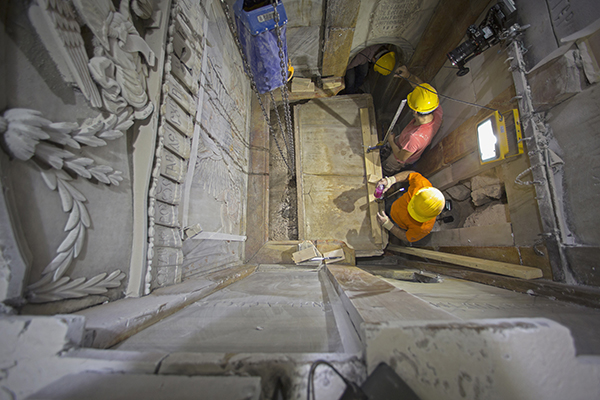Scientific testing of a cave thought by many to be the tomb of Christ has provided evidence to authenticate tradition as history.
The cave is located within the Church of the Holy Sepulchre in Jerusalem. Though archaeologists working on the project cannot say with certainty the tomb is where Christ’s body was laid after His crucifixion, the new research does seem to date the site much earlier than previously determined.
Historical accounts say the tomb was discovered by representatives of the Roman Emperor Constantine sent to find the tomb around A.D. 325. The emperor’s delegation was directed to a Roman temple built some 200 years earlier. Ancient tradition contends that around A.D. 134 the Roman Emperor Hadrian built a temple dedicated to the Roman goddess Aphrodite over a cave in Jerusalem venerated as the place of Jesus resurrection. Ostensibly this was done to emphasize Rome’s power and to push back against the new Christian religion.
Constantine’s representatives razed the temple and excavated the site, revealing a tomb hewn from a limestone cave, according to National Geographic magazine. After the excavation, a shrine called the Edicule was constructed around the tomb.
Last year archaeologists had the opportunity to obtain samples from the cave’s limestone walls, which had been covered in marble cladding since at least 1555 probably to protect the site. An archaeological team removed the marble cladding Oct. 26, 2016, and team members were granted 60 hours to conduct research. Their investigation revealed an intact limestone shelf, or burial bed, that had been covered by another marble slab with a cross carved into its surface. According to tradition, after His crucificixion, the body of Jesus was laid out on a burial bed, a common feature in tombs of wealthy 1st century Jerusalem.
The recently announced findings add weight to this tradition. National Geographic fellow and archaeologist Fredrik Hiebert said he was “absolutely amazed” by what the team found.
“We can’t say 100 percent but it appears to be visible proof that the location of the tomb has not shifted through time, something that scientists and historians have wondered for decades,” Hiebert told National Geographic’s Kristin Romey.
An immersive 3-D exhibition “Tomb of Christ: The Church of the Holy Sepulchre Experience” is open at the National Geographic Museum in Washington through the fall of 2018. The exhibit virtually transports visitors to Jerusalem. Visitors can virtually walk inside the rotunda in the Church of the Holy Sepulchre and the Tomb of Christ and see the site just as the National Geographic team saw it during the removal of the marble cladding.
The historic renovation project is featured in National Geographic’s December 2017 issue. (TAB)






Share with others: